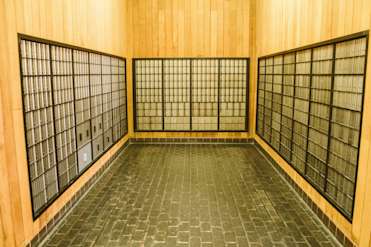
Starting your own business
Alternatives to a PO box address for your small business
Simple, smart accounting software - no commitment, cancel anytime

MAKING TAX DIGITAL
If you’re a small business owner, you might already be aware of the government’s Making Tax Digital (MTD) initiative. While it’s a big shakeup, the change presents small businesses with opportunities - especially if you use the right Making Tax Digital software. In this article, we’ll explore how the new rules can help you streamline your business.
As explained in our Making Tax Digital guide, the UK tax system is shifting to a digital model - meaning the end of paper tax returns and manual entry of data to the Government Portal.
Phase one rolled out for VAT-registered businesses with a turnover of more than £85,000 in April 2019. After an extended pause due to the COVID-19 pandemic, phase two is set to roll out from April 2022.
From this date, all VAT-registered businesses must use HMRC-approved software to keep and submit digital records.
You can learn more about the details of Making Tax Digital in our explainer. Here, though, we’ll explore how the shift can benefit small businesses.
The most obvious benefit of MTD is that it cuts down on the amount of paperwork you’ll have to deal with.
Under the new rules, businesses must keep digital records and submit the VAT returns digitally to HMRC. These digital records will, in most cases, replace physical records entirely. This means that you won’t have to sort through reams of documents when filling out your tax returns.
No more digging around for receipts and invoices. Instead, you can rest easy knowing your complete records are already digitised and accessible.
Under the new rules, digital records will replace physical records entirely, meaning you won’t have to sort through reams of documents for a tax return.
The benefits of Making Tax Digital for small businesses don’t just come at tax time. In fact, the switch to MTD can make bookkeeping easier and more efficient all year round.
Under MTD, all businesses must keep a range of digital records, including:
business name, address and VAT registration number
VAT on all goods and services you supply or receive
time and value of supply for everything you buy and sell
sales, profit and VAT owed, according to which scheme you use
This may sound like a lot - and it is. With the right software, though, you’ll be able to track and access all of this data easily and in one place.
In this way, MTD can make bookkeeping far simpler, freeing you up to focus on other areas of your business.
On top of this, Making Tax Digital offers small businesses the chance to get a much clearer picture of their financial information.
By utilising software to record and transmit your VAT return, you can significantly reduce the chances of making errors. For example, you won’t need to manually enter figures into the Government Gateway when filling out your box 9 VAT return. Using QuickBooks to file your VAT return also means you can take advantage of our VAT error checker software, which automatically scans your figures for common errors and duplications, so you only pay the VAT you owe and you remain compliant.
As all your records are to be kept digitally with MTD, the chances of you losing any receipts that you’ll need in order to file your VAT return are limited. This also means you don’t need to keep hold of any receipts for longer than necessary.
Making Tax Digital can be confusing, with a fair bit of jargon to sort through. But, if you understand the requirements, it’s clear that this scheme offers opportunities to streamline your record-keeping, stay on top of your tax liabilities and meet all your deadlines.
The best way to ensure that your business benefits from the switch to MTD compatible software. QuickBooks is fully compliant with the new rules and can help you make the switch as easily as possible.
Think you’re starting to understand Making Tax Digital? Our blog covers more hints and tips to making the switch.
9.00am - 5.30pm Monday - Thursday
9.00am - 4.30pm Friday